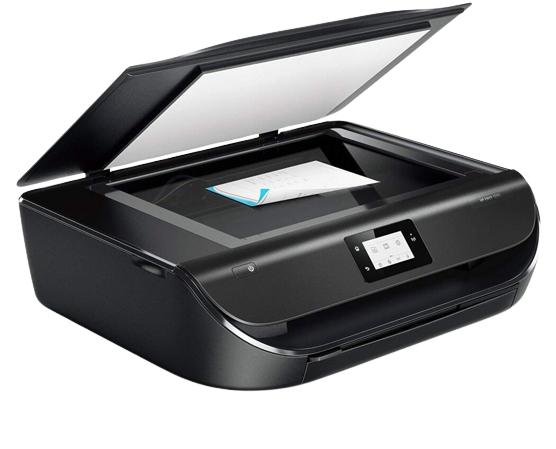
Navigating the Lag: Why Is My Printer Taking So Long to Print
In the era of interconnected devices and seamless digital workflows, networked printers have become indispensable tools for both homes and offices. However, the frustration that arises when a printer takes an eternity to produce a document over a network is an all-too-familiar experience. This article aims to unravel the complexities behind the Why Is My Printer Taking So Long to Print, exploring the myriad factors that contribute to this issue and providing practical solutions to help users reclaim the speed and efficiency they expect from their networked printers.
The Dynamics of Network Printing
Network printing involves sending print jobs from multiple computers or devices to a shared printer over a network. While this setup facilitates collaborative printing and resource-sharing, it also introduces variables that can impact printing speed.
Factors Contributing to Slow Network Printing:
-
Network Congestion: In environments where numerous devices share the same network, congestion can arise, leading to delays in data transmission between the computer and the printer. Factors such as high network traffic, inadequate bandwidth, or a crowded Wi-Fi channel can contribute to slow printing. To mitigate this, consider optimizing your network infrastructure and prioritizing print-related traffic.
-
Printer Connection Type: The method of connecting your printer to the network can influence printing speed. Wired connections, such as Ethernet, generally offer more stability and faster data transfer than wireless connections. If your printer is connected wirelessly, ensure a robust Wi-Fi signal, and consider using a wired connection for improved reliability.
-
Printer Configuration Settings: Incorrect configuration settings on the printer itself can hinder printing speed. Verify that the printer’s network settings, including IP address, subnet mask, and gateway, are correctly configured. Mismatched settings can lead to communication issues and slowdowns.
-
Driver Compatibility: The compatibility between the printer driver and the operating systems of networked computers is crucial for smooth printing. Outdated or incompatible drivers can result in communication errors, leading to slow print jobs. Regularly update printer drivers on all connected devices to ensure compatibility and optimal performance.
-
Print Job Size and Complexity: The size and complexity of print jobs play a significant role in network printing speed. Large files with high-resolution images or complex graphics require more data to be transmitted over the network, leading to longer print times. Consider optimizing print jobs by reducing file sizes or breaking down large documents into smaller, more manageable segments.
-
Firewall and Security Software: Security measures, such as firewalls and antivirus software, can impact network printing speed. These programs may scrutinize print data for potential threats, causing delays in the printing process. Configure security software to allow smooth communication between devices while maintaining necessary protection.
Solutions for Faster Network Printing
-
Optimize Network Infrastructure: Address network congestion by optimizing your network infrastructure. Upgrade your router to a more capable model, ensure adequate bandwidth, and configure Quality of Service (QoS) settings to prioritize print-related traffic. This can significantly improve the overall performance of networked printers.
-
Use Wired Connections: Whenever possible, opt for wired connections, such as Ethernet, for connecting printers to the network. Wired connections offer more stability and faster data transfer compared to wireless connections, reducing the likelihood of signal interference and enhancing printing speed.
-
Verify Printer Configuration: Double-check the network configuration settings on your printer to ensure they align with your network’s specifications. Confirm the correct IP address, subnet mask, and gateway settings. Mismatched configurations can lead to communication issues and hinder printing speed.
-
Update Printer Drivers: Regularly update printer drivers on all devices connected to the network. Visit the printer manufacturer’s website to download and install the latest driver updates compatible with your operating systems. Keeping drivers up to date ensures optimal compatibility and performance.
-
Optimize Print Jobs: Optimize print jobs to reduce their size and complexity. Compress images, choose appropriate file formats, and consider lowering print quality settings when high detail is not necessary. These optimizations can minimize data transfer requirements and accelerate printing speed over the network.
-
Implement Wired Print Servers: Consider using wired print servers to facilitate faster and more reliable communication between devices and printers. Print servers act as intermediaries, managing print jobs and reducing the direct load on the network. This can be particularly beneficial in environments with multiple users and devices.
-
Manage Firewall and Security Settings: Review and adjust the settings of firewalls and security software to facilitate smooth communication between devices on the network. Configure these programs to allow necessary print data transmission while maintaining security protocols to protect against potential threats.
-
Utilize Printer-Specific Network Features: Some printers come equipped with specific network features designed to enhance performance. Explore your printer’s settings for options such as Advanced IP settings or Ethernet configurations that may optimize network printing speed.
Conclusion
While slow network printing can be a frustrating hurdle, understanding the contributing factors and implementing targeted solutions can significantly improve the efficiency of your printing experience. Whether it’s optimizing your network infrastructure, using wired connections, or fine-tuning printer and driver settings, taking proactive measures will contribute to faster and more reliable network printing. By addressing these considerations, users can ensure that their networked printers operate at their full potential, providing quick and seamless printing for all connected devices.


